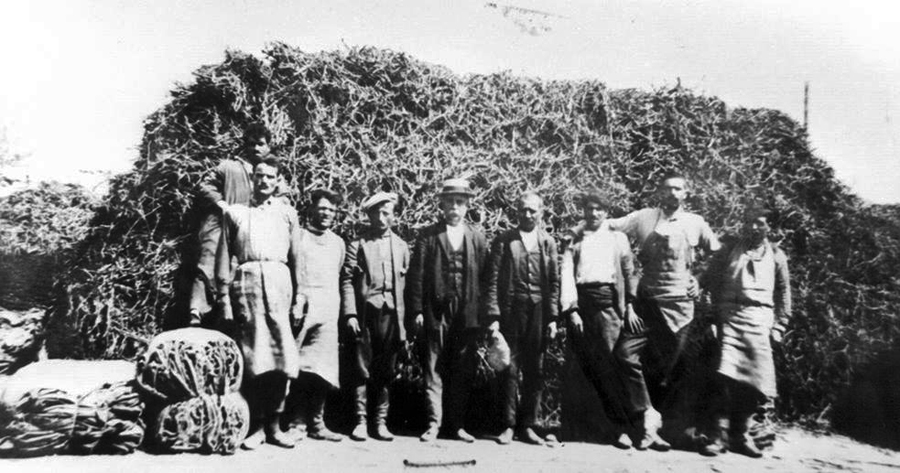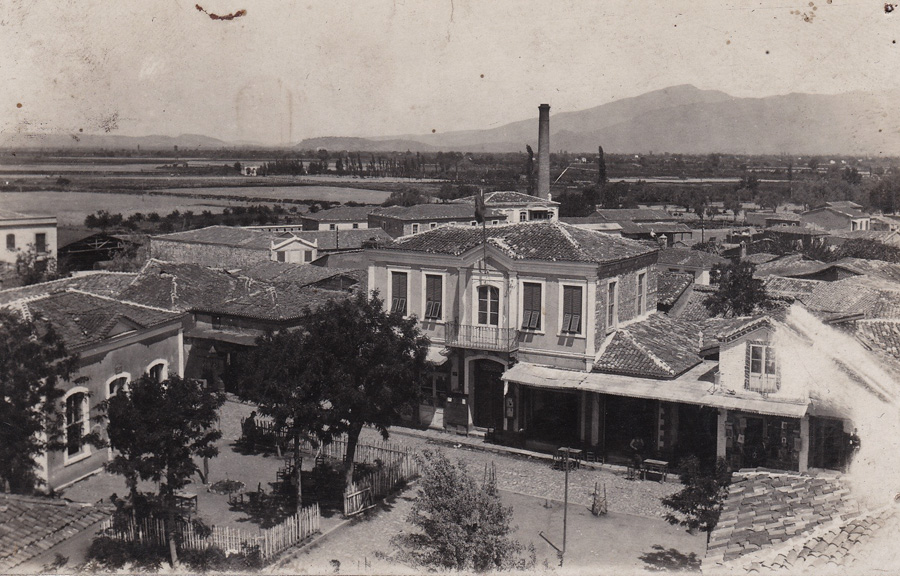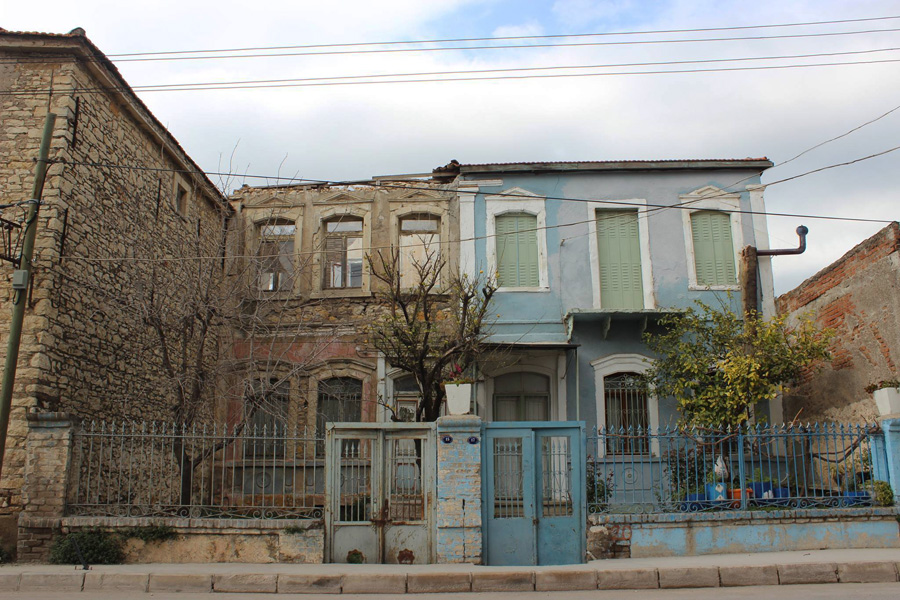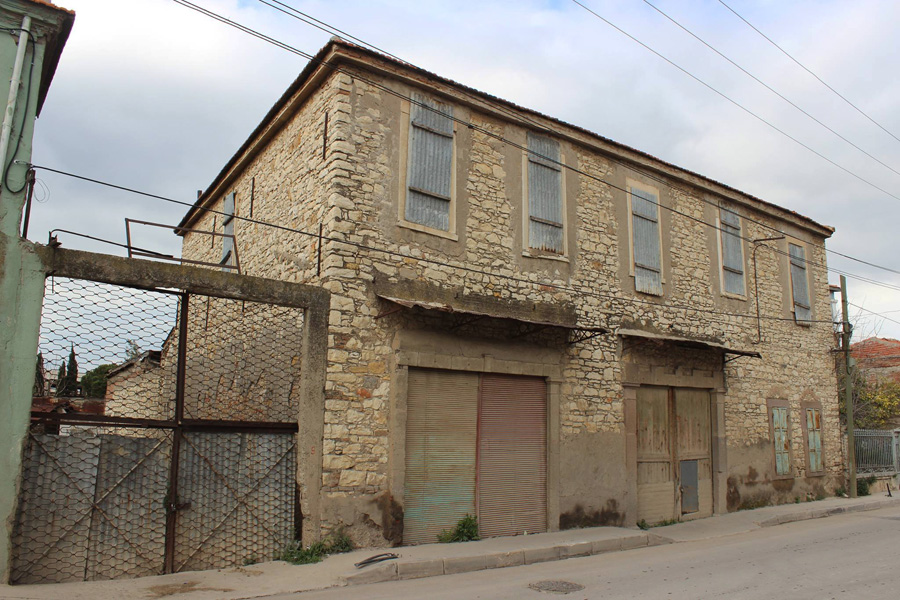
Ephemera
Menemen postcard and factory
The image below is from a postcard from the 1920-30 period whose depiction of a factory chimney in the background led to this investigation of possible link with a diary. The diary of Spencer Whiteman who operated a cotton mill from about 1870 in the minor town of Menemen, about 35 km north of Smyrna / Izmir records his trapped condition during his semi-incarceration during the First World War as an ‘enemy alien’. The diary doesn’t record the exact location or other details of the factory, so old photos and remains of today’s buildings are used as a reference, with the kind help of local city history researcher Mr Oktay Ōzengin - www.menementarihi.com.
According to the Ottoman trade records (1307 Aydın Vilayet Salnamesi) this factory was established in 1896-1897 as one of two early industrial concerns of Menemen. The factory wasn’t just a cotton mill but also a flour mill and an olive oil plant. According to the trade register the cotton mill was powered by a steam engine of 18 horse-power. The photos below show the buildings still standing today.
The centre of old Menemen with the municipality building in the centre and the suspected factory with its chimney in the rear.
These houses stand to the left of the chimney and main factory.
This main building stands to the left of the pair of houses and as can be seen from the old photo, the number of windows and building style has not altered.
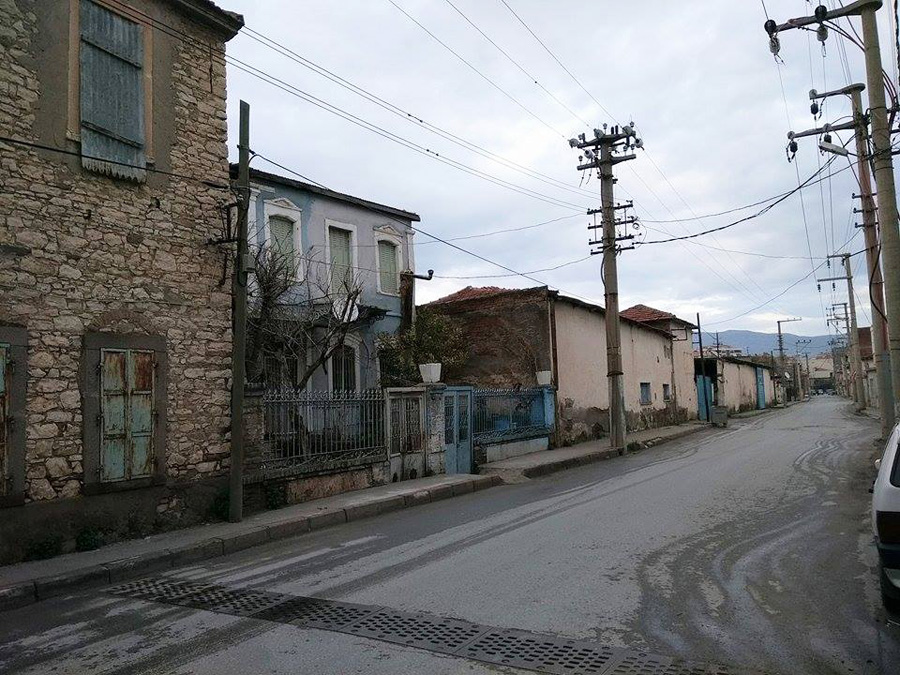
This main building standing to the right of the pair of houses was the main factory building.
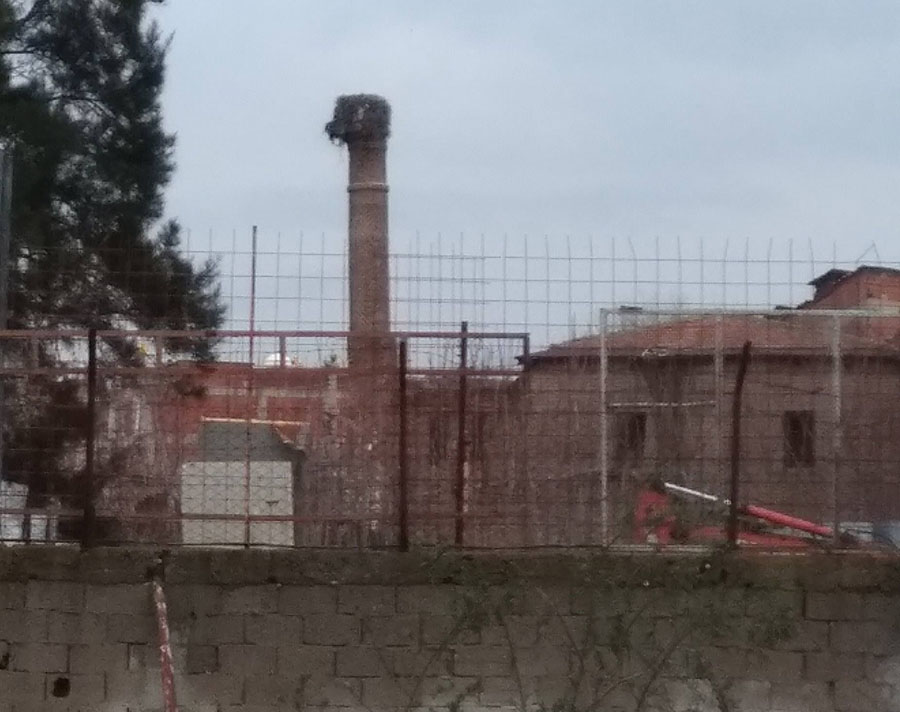
The main building viewed from the rear, showing a shorter surviving chimney, made by the grandfather of the today’s Evlioğlu family, topped with a stork’s nest. During the 1930s a local Menemen business operated this factory together with its steam engine which generated electricity for the machinery and this chimney was used to disperse the smoke. The separation of both factory buildings is around 70 metres and it is possible that this shorter chimney was built pillaging the taller Whiteman chimney.
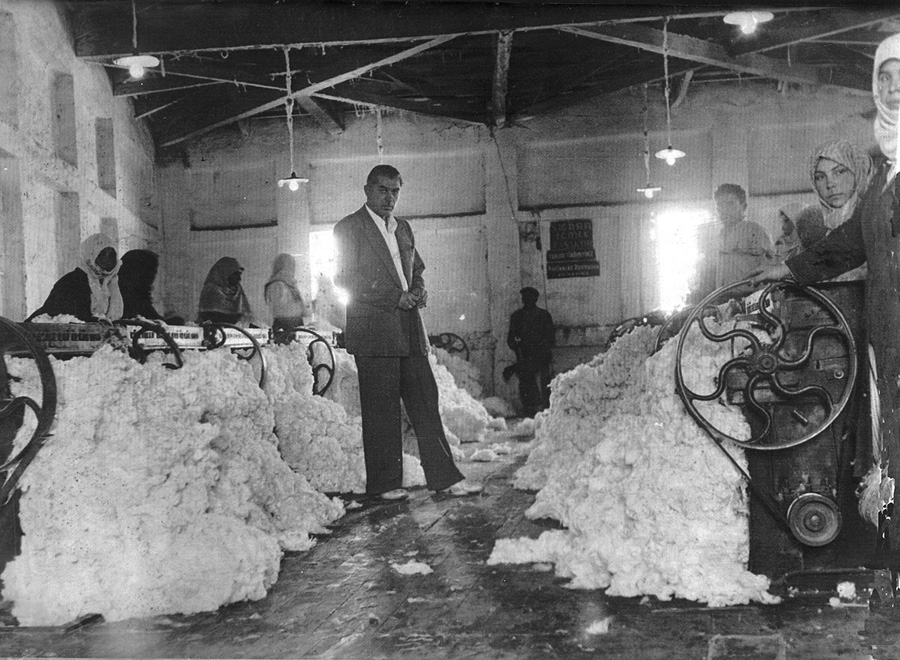
Photograph dated 1931 showing the interior of the later Evlioğlu factory, established by Arap Hasan Efendi from this family in 1930, and the person standing in the centre is his son-in-law Mustafa Abalı. Records show that in 1931 this was the only cotton-gin factory in Menemen that was powered by electricity generated from steam-power. In addition at the time there was only one establishment with a high chimney in the region. There is a possibility that the Spencer Whiteman original steam engine and machinery was used and the twisting spokes of the wheels seen here suggest these were made by Platt Brothers & Co. of Oldham, so almost certainly imported from England around the turn of the 19th-20th century.
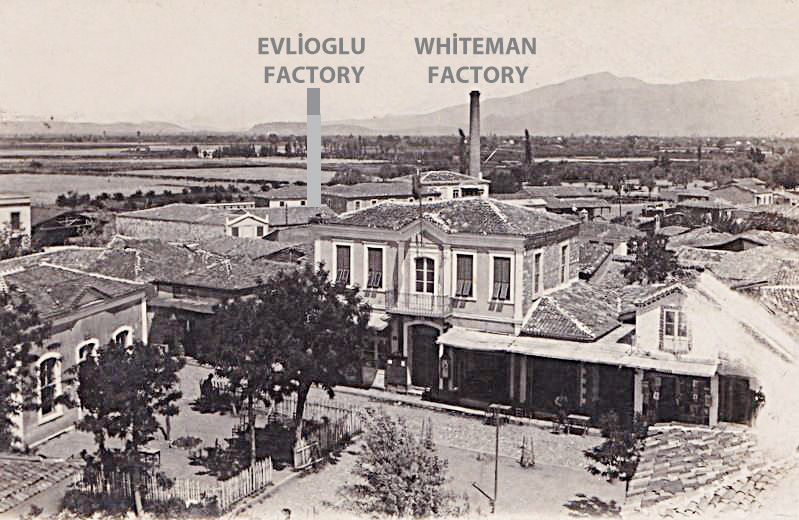
Oktay Ōzengin’s analysis of the former and current factory positions from the archive photograph. The separation of these two is around 100 m. Today the ground on which the Whiteman factory stood is a vacant plot, surrounded by the original walls, as shown below. There is a remenant building in a poor state which is the remains of the Whiteman factory, also shown below:
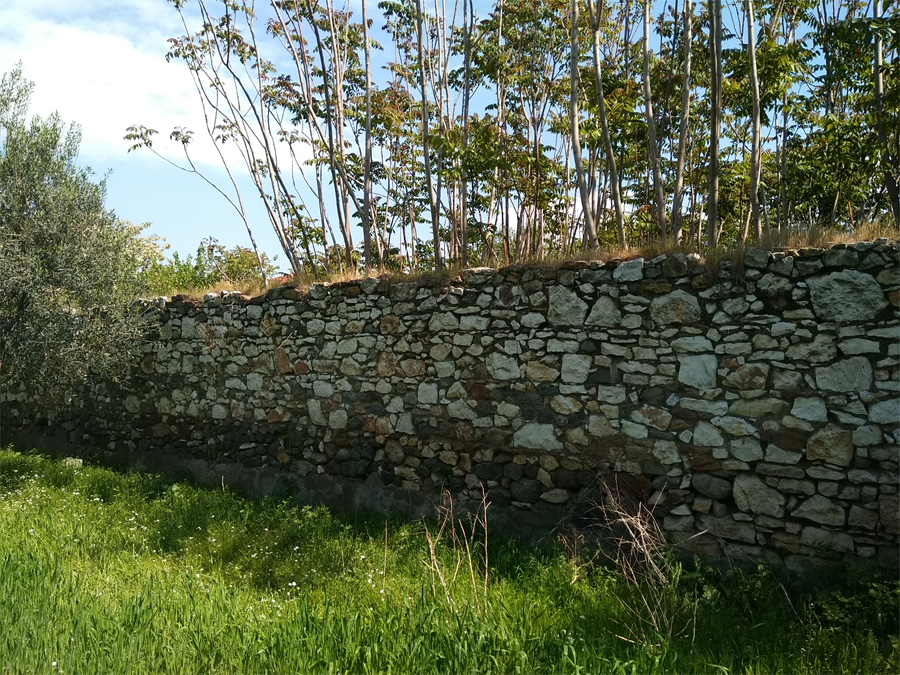
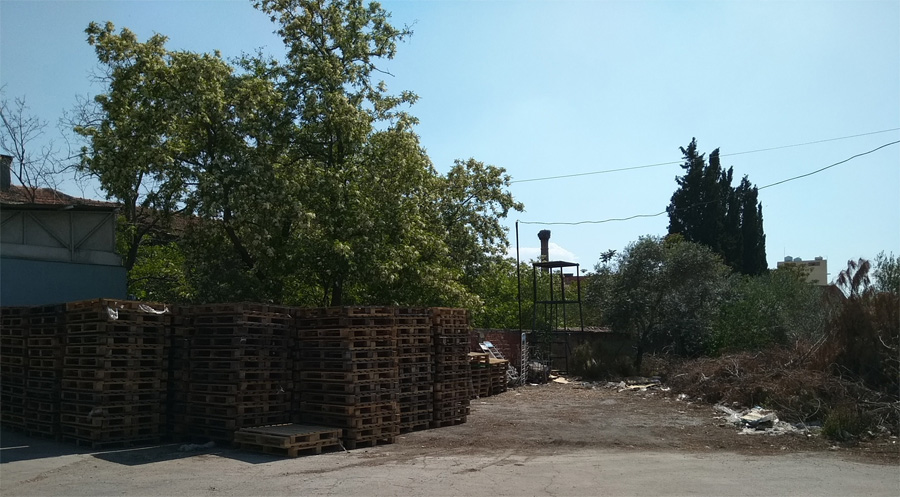
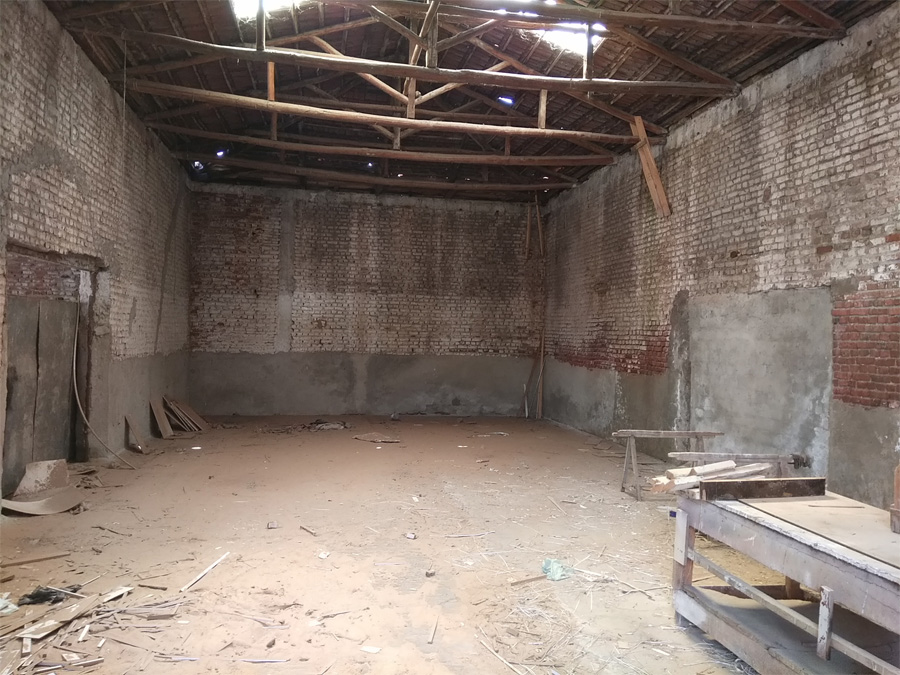
Talk by Thora Ray, a descendant of Spencer Whiteman (great-granddaughter via Spencer Whiteman’s daughter Maud who married Charlie Williamson), February 2016
Further information from Thora Ray:
Spencer Whiteman (1840-1919) was the son of an agricultural labourer, who is recorded in the 1851 Census, aged 11, as working as an agricultural labourer himself. By 1861 he is described as a “millwright”. Sometime between 1865 and 1868, he went to Turkey with his first wife and at least two children and settled in Menemen where he operated his mill until his death. His first wife died in childbirth in 1878 and, as far as I know, only one child survived to adult life from this marriage.
The following year he remarried the 19 year old daughter of the superintendent of the Smyrna-Cassaba Railway and their eldest child (my grand-mother) was born the following year. She told tales of her childhood at “the factory” but I know very little about his business. My mother did not know her grandfather or the mill. I regret not asking more questions when they were both alive.
His diary describes his life between 1915 and 1919. Once the Ottoman Empire joins the war in alliance with the Austrians, the members of the very large British trading community in Turkey became enemy aliens. Spencer’s wife and mother–in-law lived under virtual house arrest in his house next to the factory/mill for the duration of the war. His factory was sequestrated to provide accommodation for Turkish and Arab troops moving to and from Gallipoli. He records how his property was gradually demolished by the soldiers, both to adapt the premises for their purpose and as they scavenged for material to both repair carts and equipment and to burn for firewood. He also talks about the difficulties of day to day life at a time of shortage; his frustration at having nothing to do and hints that he finds his mother-in-law something of a trial!
He died in 1919 and is buried with his first wife and their children in the Anglican church in Buca, the town in which many of the British community lived. Mary his second wife moved to Cairo where her two sons were living and died there in 1930. We do not know whether he received compensation for the loss of his mill, but information is that it operated throughout the 1920s in Turkish ownership.
We also have no idea why he went to Turkey in the first place! Further information on the life and times of Spencer Whiteman: Further clues to the crucial period of 1922 from a letter sent by Spencer Whiteman’s widow, Mary Harriet Whiteman of a copied version of Alithea Whittall’s (nee Williamson) letter to a relation, transcribed with backing information
